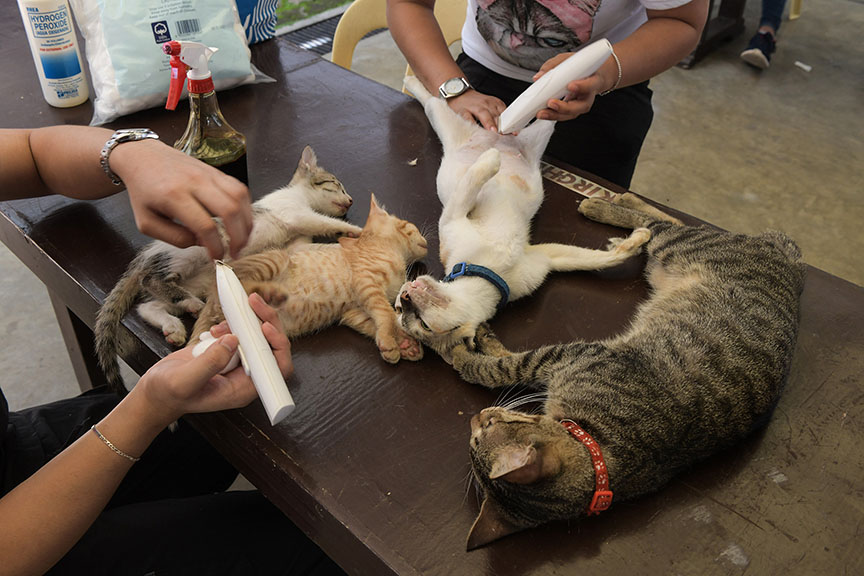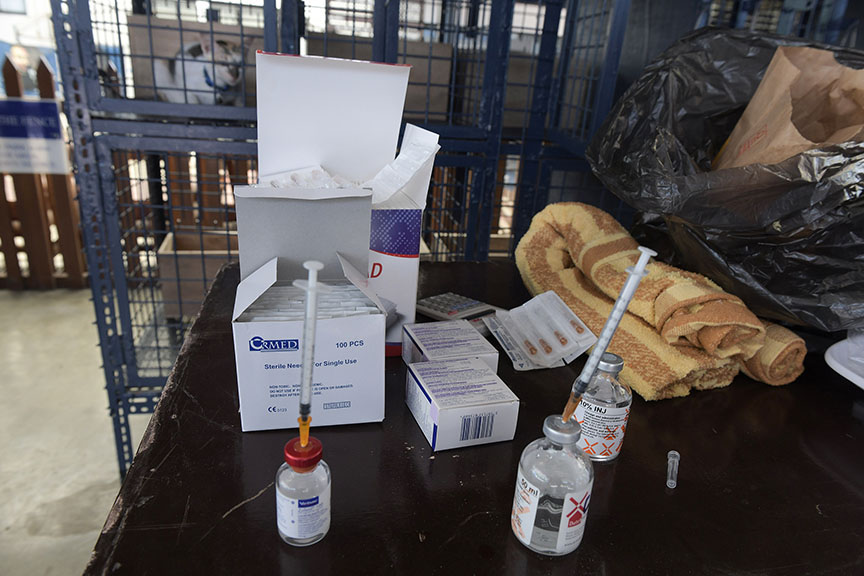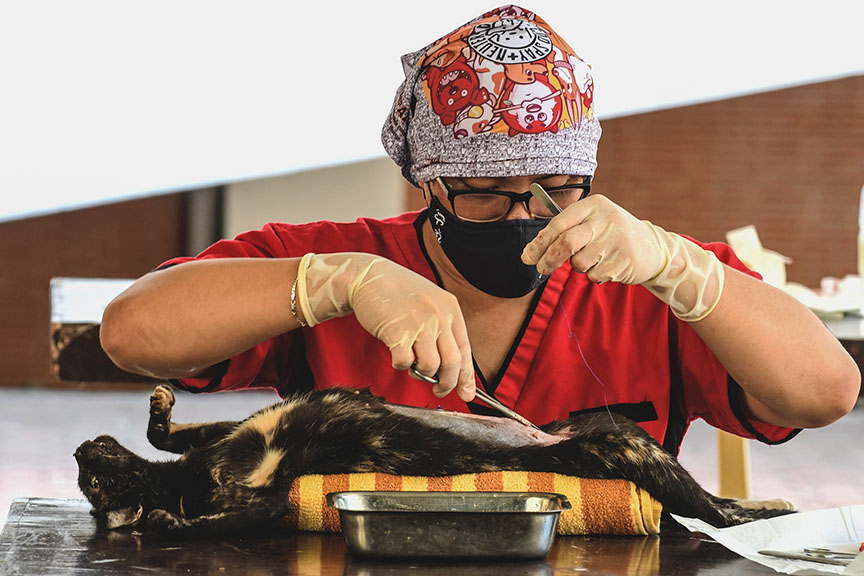FACES AND VOICES OF COVID-19
 Volunteers prepare sedated cats before they are neutered at Xavier University. The burgeoning cat population on campus as students moved online alarmed university officials. MindaNews photo by FROILAN GALLARDO | Check our photo essay for more pictures
Volunteers prepare sedated cats before they are neutered at Xavier University. The burgeoning cat population on campus as students moved online alarmed university officials. MindaNews photo by FROILAN GALLARDO | Check our photo essay for more pictures
CAGAYAN DE ORO CITY (MindaNews / 16 Sep) – Xavier University, this city’s most prominent educational institution which has a sprawling campus downtown, has a problem with cats in this pandemic.
No, it’s not about cats getting infected with SARS-CoV-2 (the virus that causes COVID-19), which even the Centers for Disease Control and Prevention (CDC) in the United States acknowledges is possible.
Because the campus has been empty since the lockdowns began, “the cats have the entire campus and buildings to themselves for more than a year,” said Maria Veronica Large, an XU employee who volunteered to help run after the cats for neutering on Wednesday.
She and other members of the Cagayan de Oro Animal Rescue Organization chased the cats all around the campus for the Xavier University 1st Spay and Neuter Campaign.
Their target: 36 alley cats that have made the empty campus their home during the coronavirus disease (COVID-19) pandemic.
Large said they were able to catch only nine adult cats and seven kittens.
“We will continue to look for them in the coming days,” she vowed.
The cats that were caught were immediately neutered on the long tables prepared by the volunteers at the campus’s Peace Park.
 Tranquilizers to sedate the cats before neutering them. MindaNews photo by FROILAN GALLARDO
Tranquilizers to sedate the cats before neutering them. MindaNews photo by FROILAN GALLARDO
Large said the cat population on campus started to swell after classes closed down in the summer of 2020 as students started to go online.
She pointed out that other schools in the city, which are also empty no thanks to COVID-19, have the same problem of burgeoning cat population.
She said she hoped they also initiate spay and neuter campaign among their cats instead of throwing them out.
“We hope we can duplicate this campaign to other campuses in the city,” Large said.
Dr. Keeno Ian Moralde, of the Vets for Pets, led the team of at least four veterinarians who participated in the spay and neuter campaign.
Moralde said the cats and kittens were all neutered to stop unwanted pregnancies and control the animal population in the campus.
“Even young kittens can reach sexual maturity in only four months,” he said.
Moralde said castration (for males) or spaying (for females) is helpful to cats.
The cats, he pointed out, no longer exhibit violent sexual activity and grows fat after being neutered.
Volunteers sedated the cats before the veterinarians operated on them. The cats were unconscious during the entire procedure, which usually lasted 45 minutes.
“Cats are always in heat. A female cat can have three litters a year. Each litter averages four kittens,” Moralde said.
 Dr. Keeno Ian Moralde, of the Vets for Pets. MindaNews photo by FROILAN GALLARDO
Dr. Keeno Ian Moralde, of the Vets for Pets. MindaNews photo by FROILAN GALLARDO
Large said the cat population in XU has grown so big that the school administration decided to catch and throw them away.
“I pleaded that spaying the female and castrating the male is a better way than throwing them away,” said Large, who have been feeding the cats in the campus for 10 years.
To her delight, the school administration relented and agreed to shoulder half of the P36,000 needed for the neutering. Large said donors and animal lovers paid for the remaining 50 percent of the money.
She said the school constructed the cages for the cats and provided the Peace Center venue for the neutering.
Castrating a male cat, Large said, costs P1,000. It is more expensive to spay the female – P1,500.
Large said the cats will be up for adoption after the healing time of seven days. (Froilan Gallardo / MindaNews)
